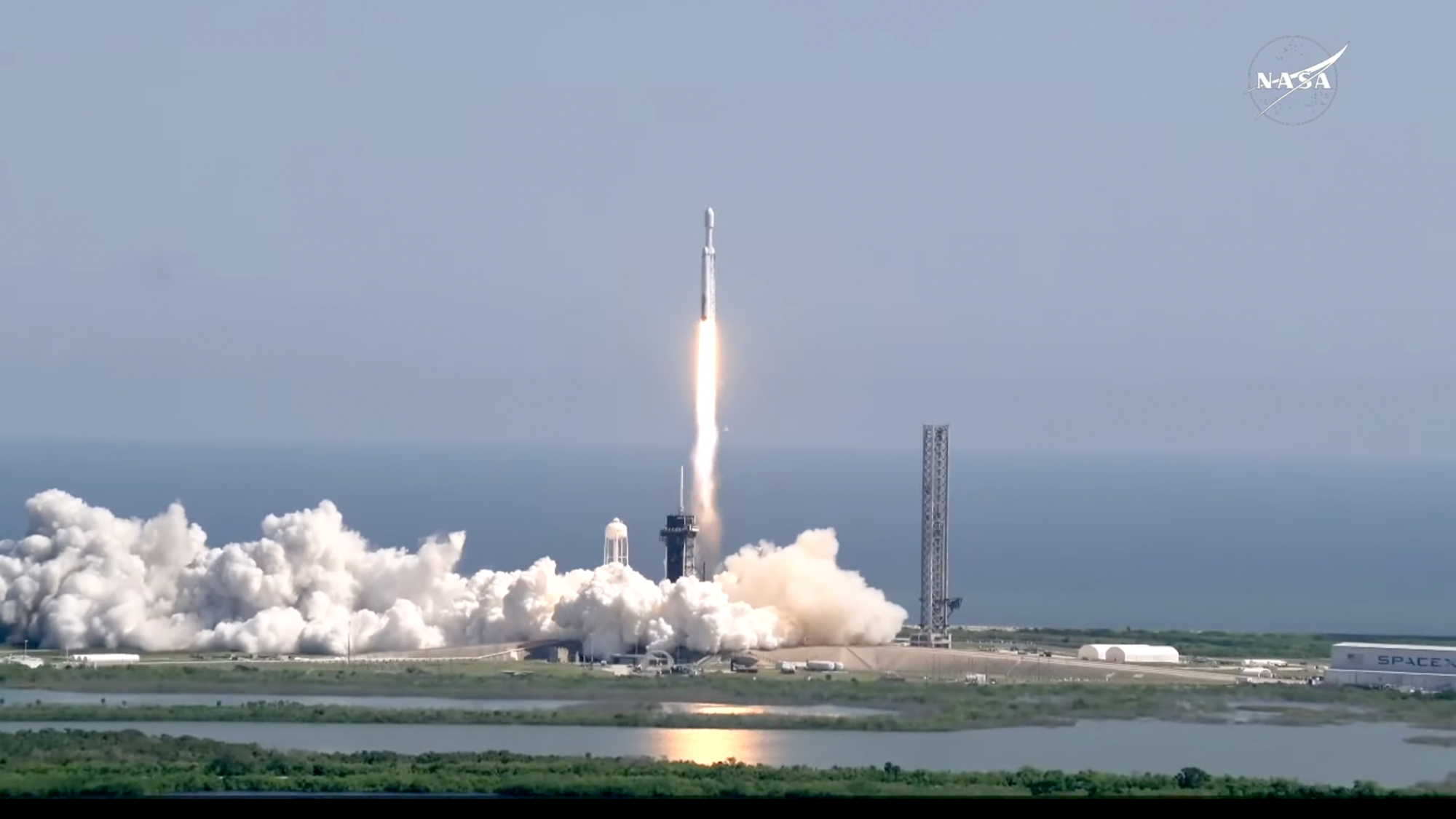SpaceX Ditched an Entire Falcon Heavy To Launch NASA’s Massive Probe To Europa!

Launch the Europa Clipper spacecraft using the Falcon Heavy rocket. This is one of the largest and most ambitious missions, requiring the use of the entire Falcon Heavy capacity without reusing the rocket’s stages.
**Detailed summary:**
– **Falcon Heavy’s mission:** Falcon Heavy is used to launch the Europa Clipper spacecraft, weighing more than 6 tons, one of the largest probes ever built by mankind, except for some Chinese probes. Europa Clipper will reach Jupiter in 2030 after performing many gravity assists from Mars and Earth.
– **Thrust calculation:** To successfully launch this spacecraft, Falcon Heavy cannot reuse rocket stages due to energy requirements. It needs enough speed and energy (calculated as “C3”) to escape Earth’s orbit and head to Jupiter. C3 measures the excess energy required to escape gravity, and for Europa Clipper, C3 is calculated to be around 40 km²/s².
– **Journey to Jupiter:** The spacecraft will use gravity assists from Mars and Earth before reaching Jupiter. Once in the Jupiter system, it will fly by and use the gravity of Jupiter’s moons, especially the largest moon, Ganymede, to adjust its speed and approach Europa.
– **Exploring Europa:** Europa Clipper will study Europa’s surface and sub-ice structure, especially its subsurface oceans, where life could exist. The mission will use advanced scientific instruments, including a magnetometer to measure Europa’s magnetic field and analyze subsurface ice eruptions.
– **Radiation issues:** Europa is in Jupiter’s intense radiation zone, which is harmful to the spacecraft. To protect its equipment, the spacecraft is equipped with radiation shielding and will only fly by Europa for a short time before leaving the danger zone.
– **Power Source:** The Europa Clipper spacecraft uses solar panels, rather than the nuclear power plants used by Galileo, thanks to advances in solar panel technology. These panels are large enough to collect enough energy at great distances from the Sun, but they will also lose efficiency over time due to the effects of radiation.
The mission is a major step forward in exploring Europa and the possibility of life in its subsurface oceans.
The Europa Clipper spacecraft carries a suite of advanced scientific instruments to study the surface and environment of Europa, one of Jupiter’s icy moons. These instruments will help determine whether Europa has the conditions to sustain life.
1. **Mass Spectrometer**: This instrument measures the mass of ions created when materials collide and become ionized. It uses electric fields to accelerate particles, then adjusts their trajectories with magnetic fields. Based on how much the ions bend, the spectrometer can accurately determine the mass and thus the composition of atoms. If the spacecraft flies through the plumes of water ejected from Europa’s sub-ice ocean, the spectrometer will directly sample and analyze the substances in that ocean.
2. **Surface Dust Analyzer (SUDA)**: This instrument works like a whale opening its mouth to suck in dust particles from space as the spacecraft flies through the dusty regions. As the dust particles hit the instrument, they generate heat and ionize, allowing scientists to measure the arrival time of the ions and calculate their mass-to-charge ratio. This allows scientists to determine the chemical composition of the dust particles.
3. **RAdar REASON**: This is a radar instrument mounted on the spacecraft’s solar panels. It will send radio pulses into Europa’s icy surface, and the reflected signals will provide information about the structure beneath the ice. The radar can use a variety of frequencies, and at high frequencies, it can penetrate as deep as 30 km below Europa’s surface, potentially exploring the sub-ice ocean.
In addition to the main instruments, the spacecraft also collects data by tracking very small changes in its own velocity as it orbits the planets, using the Doppler effect. These data help calculate the gravitational effects of surrounding bodies, providing information about Europa’s environment and internal structure.
During its journey to Jupiter, the spacecraft will fly by Mars and Earth, potentially taking the opportunity to test the operation of its instruments. However, the bulk of the mission will actually take place when the spacecraft gets close to Jupiter and begins observing Europa.
Europa is an important target because it has the greatest potential for life to exist beyond Earth. Europa has an ocean under its thick layer of ice, powered by Jupiter’s tidal forces. This energy could keep the water liquid and provide heat from below, much like how deep ocean vents on Earth power ecosystems without sunlight.
While photosynthesis is unlikely on Europa due to the lack of sunlight, scientists hope that there may be geothermal energy sources, similar to the deep-ocean thermal vents on Earth, where ecosystems thrive on chemical energy. In addition, Europa’s surface is constantly exposed to radiation from Jupiter’s magnetic field, causing chemical reactions and creating complex compounds that could seep into the subsurface ocean through geological processes.
However, the mission does not promise to find evidence of life. The main goal is to collect detailed data about Europa’s environment to help scientists better understand its habitability. The findings from Europa Clipper could lay the groundwork for follow-up missions, even sending landers or more in-depth explorers in the future.
Finally, if you want to learn more about scientific theories and discovering extraterrestrial life, the sci-fi movie “2010: The Year We Make Contact” might be an interesting suggestion.









